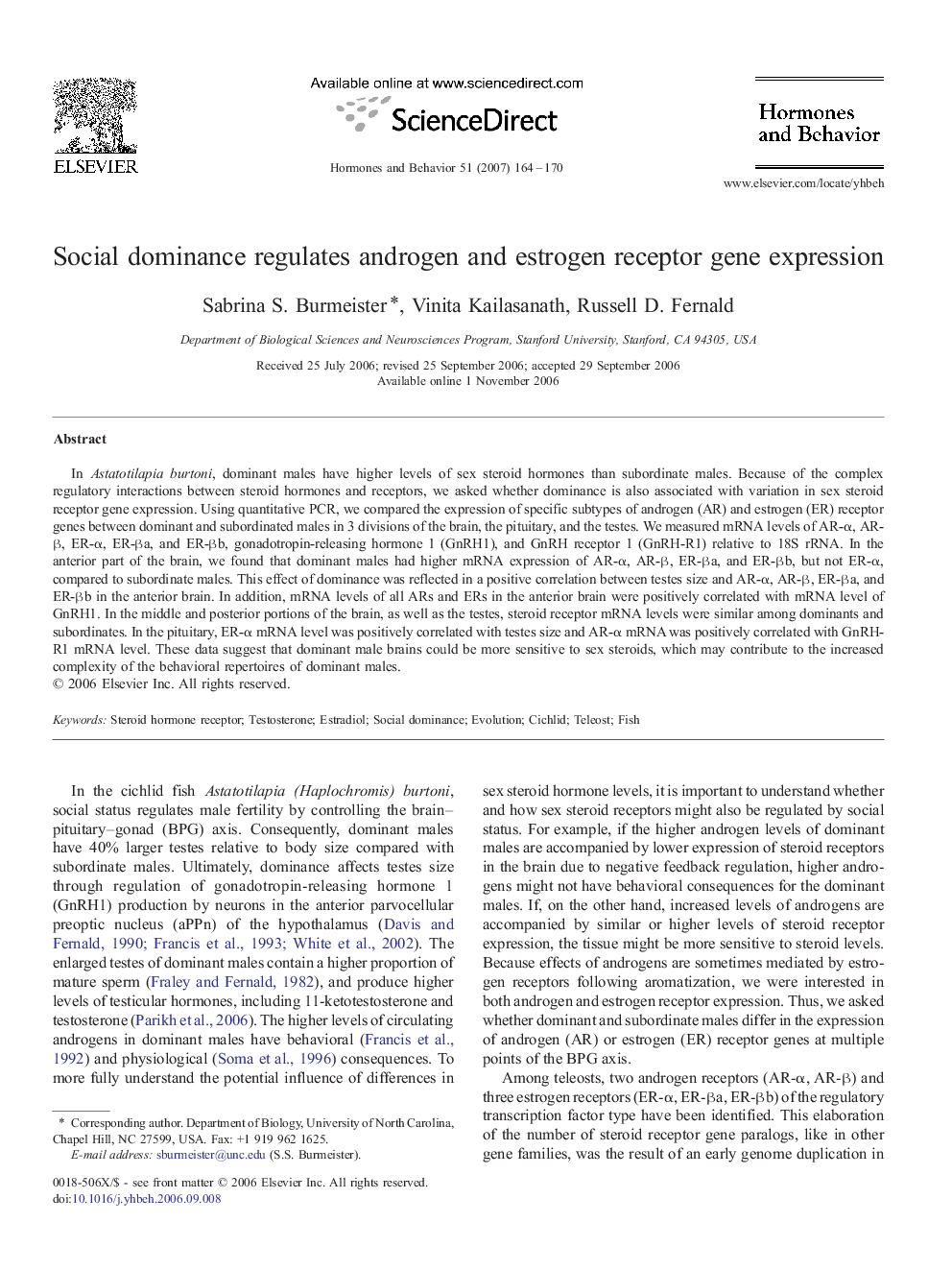| کد مقاله | کد نشریه | سال انتشار | مقاله انگلیسی | نسخه تمام متن |
|---|---|---|---|---|
| 323872 | 540805 | 2007 | 7 صفحه PDF | دانلود رایگان |

In Astatotilapia burtoni, dominant males have higher levels of sex steroid hormones than subordinate males. Because of the complex regulatory interactions between steroid hormones and receptors, we asked whether dominance is also associated with variation in sex steroid receptor gene expression. Using quantitative PCR, we compared the expression of specific subtypes of androgen (AR) and estrogen (ER) receptor genes between dominant and subordinated males in 3 divisions of the brain, the pituitary, and the testes. We measured mRNA levels of AR-α, AR-β, ER-α, ER-βa, and ER-βb, gonadotropin-releasing hormone 1 (GnRH1), and GnRH receptor 1 (GnRH-R1) relative to 18S rRNA. In the anterior part of the brain, we found that dominant males had higher mRNA expression of AR-α, AR-β, ER-βa, and ER-βb, but not ER-α, compared to subordinate males. This effect of dominance was reflected in a positive correlation between testes size and AR-α, AR-β, ER-βa, and ER-βb in the anterior brain. In addition, mRNA levels of all ARs and ERs in the anterior brain were positively correlated with mRNA level of GnRH1. In the middle and posterior portions of the brain, as well as the testes, steroid receptor mRNA levels were similar among dominants and subordinates. In the pituitary, ER-α mRNA level was positively correlated with testes size and AR-α mRNA was positively correlated with GnRH-R1 mRNA level. These data suggest that dominant male brains could be more sensitive to sex steroids, which may contribute to the increased complexity of the behavioral repertoires of dominant males.
Journal: Hormones and Behavior - Volume 51, Issue 1, January 2007, Pages 164–170